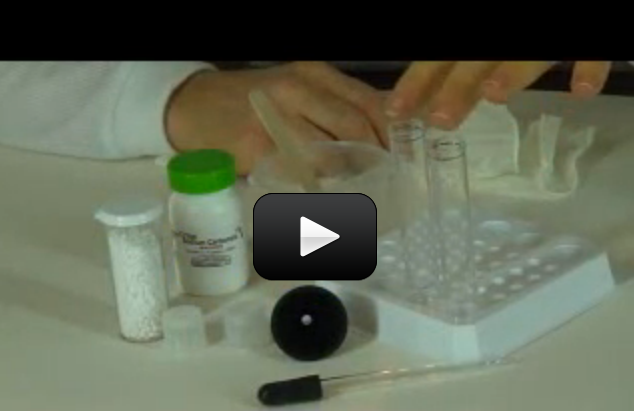Dissolving calcium chloride is highly exothermic, meaning that it gives off a lot of heat when mixed with water (the water can reach up to 140oF, so watch your hands!). The energy released comes from the bond energy of the calcium chloride atoms, and is actually electromagnetic energy.
When you combine the calcium chloride and sodium carbonate solutions, you form the new chemicals sodium chloride (table salt) and calcium carbonate. Both of these new chemicals are solids and “fall out” of the solution, or precipitate. If you find that there is still liquid in the final solution, you didn’t have quite a saturation solution of one (or both) initial solutions.
[am4show have='p8;p9;p11;p38;p92;p18;p45;p91;' guest_error='Guest error message' user_error='User error message' ]
Materials:
- calcium chloride (AKA: "ice melt" or "Dri-EZ")
- sodium carbonate (AKA: "washing soda")
- two disposable cups
- two test tubes with caps
- medicine dropper
- distilled water
- goggles and gloves
Download Student Worksheet & Exercises
Mix up a saturated solution of calcium chloride in one test tube and a saturated solution of sodium carbonate in the other. Here’s how to do this:
Sprinkle 1 teaspoon of calcium chloride into a disposable cup. Add in a few tablespoons of water and stir, dissolving as much of the solid into the water as possible. Add more calcium chloride until you see bits of it at the bottom that refuse to dissolve. Now pour only the liquid into your test tube; the liquid is your saturated solution. Do the same for the sodium carbonate.
Do the test tubes feel hot or cold? Pour one test tube into another.
Instant solid.
Calcium chloride is hygroscopic (absorbs moisture), exothermic (releases heat when melted or dissolved), and deliquescent (dissolves in the moisture it absorbs and retains it for a long time).
[/am4show]

